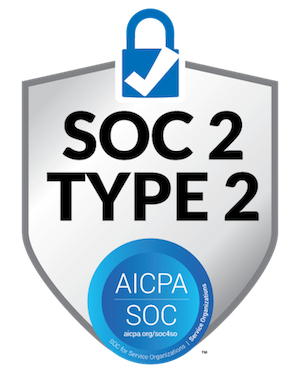Keep all the existing and new addresses of your mailing list standardized with the help of PostGrid’s address standardization API. It helps you earn customers’ trust through timely deliveries.

International Address Validation Service
Capture the right address every time. 245+ Countries Covered.
Get Accurate Global Address Data Everytime.
TRY IT OUT
output Address result
3075 14th Ave. #212, Markham,
ON, L3R 5M1, Canada
How do You Standardize Your Addresses

Address standardization is essential for your company because you may send your direct mail pieces to the wrong addresses without one. In addition, if the information contained in your mail piece was confidential, it might cause severe problems to your customers and your company’s reputation.
Similarly, if you launch direct mail marketing campaigns regularly, then address standardization can help you prevent misspending. Most of the time, due to retargeting customers and potential clients, companies end up storing the details of the same customers more than once.
Now, this results in sending multiple direct mail pieces to the same customer several times. It cost you money and may irritate your customers as well.
Now that you have an idea why address standardization can be a great addition to your direct mail process, you should know how to do it.
You have two options: to do it yourself and the other one by using an address standardization API.
To do the former, you’d need to follow the following steps:
- Get the addresses you want to standardize.
- Check the spelling, typos, and other errors.
- Edit and correct the abbreviation where needed.
Now, it may seem easy to do, but it might take you tons of hours to complete this process. Plus, manually doing it may cause you to let slip a few errors, which destroys the whole purpose behind it.
The second option is to use an address standardization API like PostGrid.
The API exactly does what’s been done in the previous step. The only difference is that it does it all automatically.
The only task that you’d need to do is integrate it with your system with a few clicks. From there on, it takes charge of the process and completes the whole standardization process on its own.

PostGrid's API is SERP
(Software Evaluation and Recognition Program) Certified

The postal services of Canada developed a certification program known as SERP. It is simply there to indicate that when a company is SERP certified, it’s using Canada’s official database to verify your addresses.
When you’re sending snail mail through a company that’s SERP certified, then you can send it carefreely. You can send any type of mail pieces through this, viz.,
- Direct Marketing Mails
- License Renewals
- Customer Awards
- The Donation
- Discounts and Offers
- Loyalty Rewards
- Rebate Offers
- Financial Details
- Legal Documents
- Subscription Renewals
- Billing Statements
- The Newsletters
- Political Messages
- Compliance Letters, etc.
How Can PostGrid Address Standardization API Help You

To get started with PostGrid, you’d need to integrate the API with your CRM, website, or other tools that you use. Once it’s been integrated, it’ll fetch all of your customers’ details and standardize them.
This is what it’ll do for your mailing list.
- It corrects all the spelling errors, viz., the state, city, or other location names.
- Correct the formatting according to USPS, viz., capitalization.
- Edit and correct the abbreviations as per USPS records.
- Fixes the zip codes to ZIP+4 characters
- Recognizes and highlights the information gaps.
However, for the best results, we highly recommend that you also get an API that can parse and validate your addresses too.
- Standardization: Standardization mainly means to put all of the address details of your customers in a similar format that Canada Postal Service Provider suggests.
- Validation: The verification process is when the PostGrid API checks all of the addresses of your customers for their validity and deliverability. This way, all of your direct mail pieces reach the right recipients.
- Deduplication: The API also removes the identical addresses occurring in the database multiple times while checking. It helps you save the cost of your direct mail marketing.

Benefits of PostGrid Address Standardization API
Now that you know why address standardization is essential for your company and how it works.
You should know how precisely your business can benefit from it.
Low or No-Bounce Rate
With just the right addresses present in your mailing list, no doubt that the direct mail pieces you’ll send will reach the right locations. This way, your bounce rate will be reduced considerably, and you can expect a better engagement and response rate too.
With fewer mail pieces returning, you can also ensure that your measurable results are accurate.
Reduced Misspending
Your misspending will also reduce with deduplication as you’d only invest money for the mail pieces to be sent to the valid and deliverable addresses.
No wonder a lot of money goes into creating, printing, and shipping the mail pieces. And when you’re launching a direct mail marketing campaign, you have to ship tens of thousands of direct mail. Thus, having an address standardization API can be a wise choice for you.
Effective Communication
One of the best ways to keep your customers coming back to you and get them to become your loyal customers is good communication. And direct mail pieces ensure it very well. The only condition is that they need to be sent to the right recipients and at the right time.
For instance, most businesses try to increase their brand awareness by sending postcards to their customers on special occasions like festivals, birthdays, anniversaries, achieving a particular number of customers from a specific area.
You can do this too. And with the right addresses in your system, this method can bring some really good results.
Which Industries Can Use
PostGrid's Address Standardization API
Here’s a list of the industries that will benefit from address standardization API:

eCommerce Stores
Every eCommerce store is bound to have a system that ships products. And if you want to keep the reputation of your company good, then you should have an address standardization API.
For instance, most customers stop buying from a particular site that either doesn’t send their products at the promised time, takes way too long to deliver the shopping items, or doesn’t show up at all.
It could be because the package may have got lost in the way, got delivered to the wrong addresses, or who knows, the company actually is a fraud.
However, the first two would definitely need a system that can help them grow their business by making their customers happy with on-time at the proper address.
Real Estate
If you’re into the real estate business and your website lists different properties, you qualify for the address standardization program. Because if the people scrolling through your website decide to take action and actually go to visit the place, then they’re taking time from their busy schedules and trusting your website to reach the correct property.
However, if the address that came from your website either didn’t exist or was wrong, then it may cost you some good potential customers, who were on the verge of converting into the buyer.
Plus, the frustrated clients who found it really difficult to find the property listed on your website will leave bad reviews. And that’s ultimately bad for the reputation of your business.
Financial Institutes
Many financial institutes like banks provide loans to their customers. However, to sanction it, they need the borrower to pass the address verification test. If you have a similar business model, it’d be better to verify those addresses by a trusted API, like PostGrid.

Annoyed With Returned Shipments and Incorrect Data?
Use PostGrid’s Address Verification API to Standardize, Validate, and Verify Millions of Addresses in One Go
Integrates with your favourite tech stack & tools
Easily improve your workflow and automate your offline process by integrating with your current stack














Ready to Get Started?
Start transforming and automating your offline communications with PostGrid







